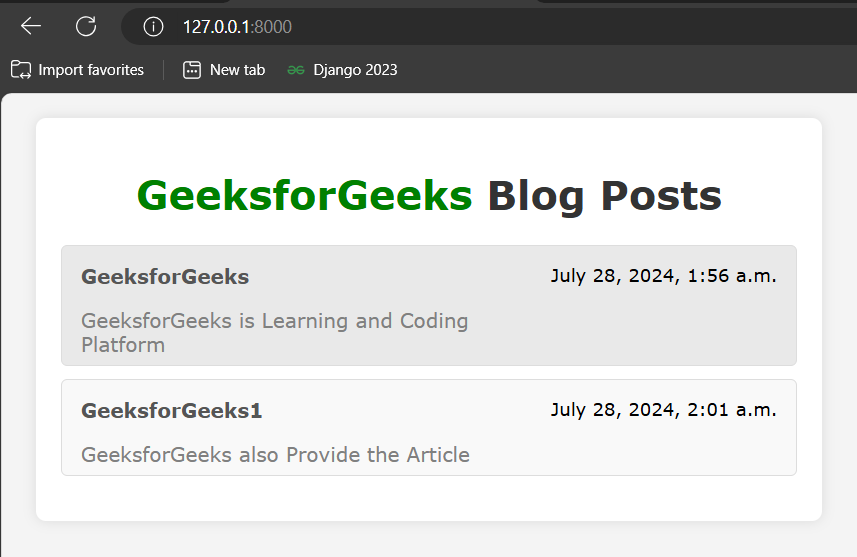
|
|
Django is a powerful web framework for building web applications in Python. One common task in Django is setting up models, which are classes that represent database tables. Sometimes, it’s useful to have default values for certain fields in these models. This article will guide you through creating a small Django project, including setting a default value for a field in a Django model. We will cover the necessary files and code to achieve this. Set a Default Value for a Date Field in a Django ModelTo illustrate how to set a default value for a field, let’s create a simple Django project. We will create an app called blog with a model named Post that includes a title, content, and a published_date with a default value. 1. Setting Up the Django ProjectFirst, make sure you have Django installed. If not, you can install it using pip: pip install djangoNext, create a new Django project and navigate into the project directory: django-admin startproject mysite 2. Creating the Blog AppCreate a new app within the project: python manage.py startapp blogTo include our new blog app in the Django project, we need to add it to the INSTALLED_APPS list in mysite/settings.py: settings.py (mysite/settings.py): INSTALLED_APPS = [ File Structure Now, let’s define the model for our app. 3. Defining the Post ModelIn the blog app, we will define a Post model. This model will have three fields: title, content, and published_date. We will set a default value for published_date using Django’s timezone.now function. In this model:
4. Applying the MigrationsTo create the corresponding database table for the Post model, we need to create and apply migrations: python manage.py makemigrations These commands create the necessary database schema changes and apply them. create superuser using the below command and add the data in database. python manage.py createsuperuserand add the data as in below shows data yellow color box cover data is we set as default this way we can set default value.  5. Creating a View and Template for the Post ModelTo display the posts, we need to create a view and a corresponding template. views.py (blog/views.py): urls.py (blog/urls.py): Include the blog’s URLs in the main project’s URL configuration: urls.py (mysite/urls.py): Template (blog/templates/post_list.html):This template will list all the posts along with their titles and published dates. 7. Running the Development ServerStart the Django development server to see the app in action: python manage.py runserverNavigate to http://127.0.0.1:8000/ in your web browser. You should see a list of posts with their titles and published dates.  ConclusionSetting a default value for a field in a Django model is a simple yet powerful feature that helps ensure consistent data in your database. In this article, we created a small Django project with a Post model, demonstrating how to set a default value for the published_date field using Django’s timezone.now. This approach can be applied to various data types and scenarios in Django models. By following these steps, you can easily create and manage Django models with default values, making your web application more robust and easier to maintain. |
Reffered: https://www.geeksforgeeks.org
| Python |
Type: | Geek |
Category: | Coding |
Sub Category: | Tutorial |
Uploaded by: | Admin |
Views: | 24 |